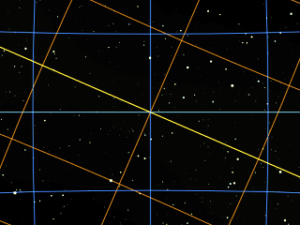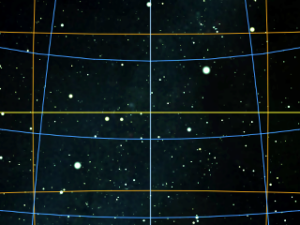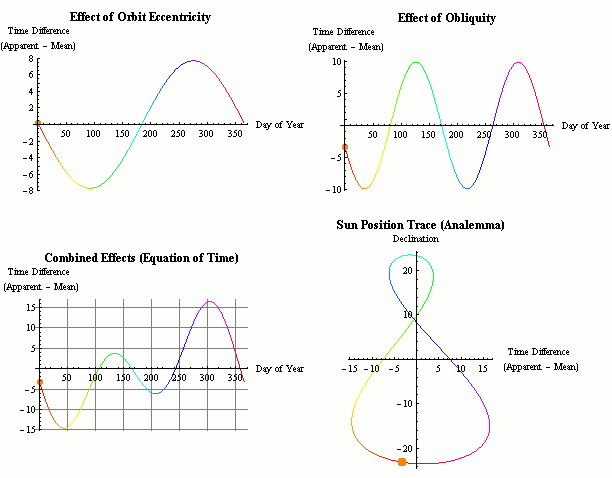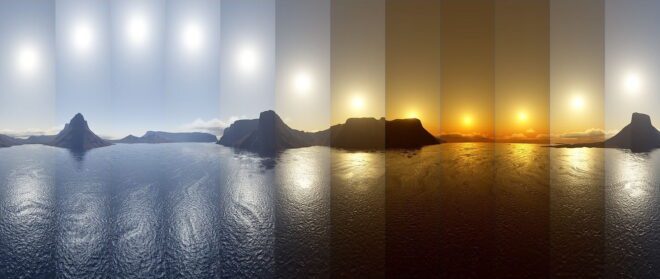
Note: Updated on Aug 28, 2023 / י׳ אלול תשפ״ג to cover later changes in the KosherJava zmanim library to support astronomical chatzos calculation.
This article was written לז״נ my close friend ר׳ מנחם מענדל בן יחיאל מיכל Menachem Halpert ז״ל. He was never without a smile, was always ready to listen and help, and was a true עניו. Menachem ז״ל was a regular reader of my posts, and in his self-deprecating way always claimed that the contents were over his head, but discussing the subject with him clearly showed a deep understanding. יהא זכרו ברוך.
Possible Definitions of Chatzos
The zmanim of chatzos / חצות are the solar midday and midnight points. The Radak in the ספר השרשים, שרש חצה defines the word chatzos / חצות as splitting the morning from the afternoon (or first half of the night from the second half).
I am aware of three possible definitions of chatzos.
- When the sun is directly south (or north) of an observer. This is known astronomically as the solar meridian transit. This method is the only one that was measurable (not perfectly) in the time of chazal (and until relatively modern times) using a sundial or the shadow of a perfectly vertical pole with knowledge of the exact point of the cardinal directions. This is the generally accepted definition of solar noon in the astronomical world.
- When the sun reaches its highest altitude of the day. This is known astronomically as the sun’s upper culmination.
- Halfway between sunrise and sunset (or variations on this, such as halfway between alos and tzais).
Although these events happen in close proximity to each other, they do not happen at the same time as we will explain in this article. While they generally occur within the span of half of a minute and the difference is therefore halachically almost insignificant, the point of this article is to understand the exact definition of chatzos.
Is Calculating Chatzos As Half of the Day Close Enough?
Currently (as of the zmanim library v2.5.0 release) the KosherJava Zmanim library calculates chatzos as astronomical chatzos described in the first definition above. Prior to this release, for simplicity and practicality it was calculated as halfway between sunrise and sunset. Rabbi Yehuda Burstein in his זמנים כהלכתם / Zmanim Kehilchasam 7th edition vol. 2 פ״ו ס״ד defines chatzos:
חצות היום הוא הרגע בו השמש נמצאת באמצע הרקיע ממש – בראש גובה קשת מהלכה היומי ממזרח למערב. … חישוב זמן זה הוא פשוט – דהוא במחצית הזמן שבין רגע הנץ המישורי לבין רגע השקיעה המישורית באותו מקום באותו יום.
Chatzos is the moment that the sun is positioned exactly in the center of the sky – at the highest point of its daily east/west path … Calculating this time is simple since it is halfway between the moment of sea-level sunrise and sea-level sunset.
He continues to explain that this half-of-the-day chatzos is not exactly accurate since the time from sunrise to astronomical midday is not equal to the time from astronomical midday to sunset. The difference is minor, and for this reason, most zmanim calendars do not bother calculating the astronomical chatzos.
Rabbi Meir Posen in the Ohr Meir / אור מאיר (פרק ה׳ ס״א אות י׳) states unequivocally that:
לענין חצות היום כבר הבאתי לעיל בריש הפרק דאין לנו אלא השעה שהשמש עומד למעלה בעמצע הרקיע בין מזרח למערב, ובזה אין נפקא מיני׳ אי מחשבין מהנה״ח עד השקיעה או מעלוה״ש עד עד צה״כ, כי בין כך ובין כך שעה ששית כלה בזמן חצות של החמה בדיוק.
Regarding the matter of chatzos, I have already mentioned above in the beginning of the chapter that the only definition is the time when the sun stands high in the middle of the sky between east and west, and there is no difference whether calculating the day from sunrise to sunset or alos hashachar to tzais hakochavim, regardless the sixth hour ends at the exact moment of astronomical chatzos.
See additional details and proofs in his footnotes.
Calculated Differences Between Meridian Transit and Half-Day Chatzos
In an effort to show the actual difference between meridian transit and half of the day chatzos, I graphed the difference in seconds between the two chatzos calculations at various latitudes.
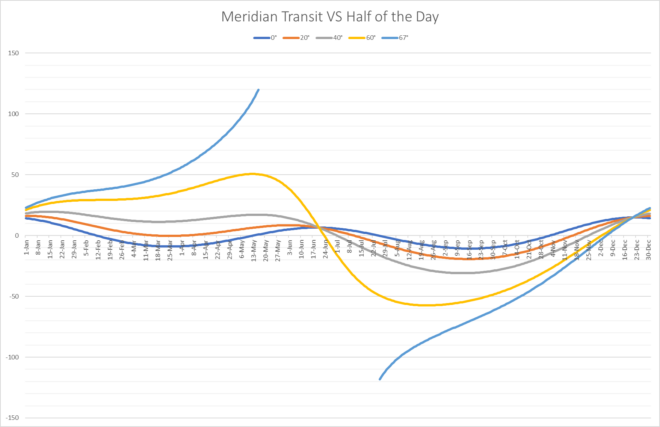
Sun–Meridian Transit Time Versus The Sun’s highest Point (Transit Versus Culmination)
It is interesting to note that the sun is not exactly at its highest point (culmination) at its local meridian transit (when it is at an azimuth of 180° – directly south or 0° – directly north, depending on your location) on most days of the year. This was mentioned over 120 years ago in a paper by D.A. Pio published in the Monthly Notices of the Royal Astronomical Society, Vol. 59, May 1899; p. 513:
The Sun, the Moon, and all the planets culminate out of the meridian.
It is at its maximum difference near the equinoxes when the day arc is changing significantly from day to day. For example at Yerushalayim’s latitude of 31.778°, the sun reaches its highest point on February 20th 11.14 seconds after crossing the meridian. At 60° the difference on March 4th increases to 27.13 seconds.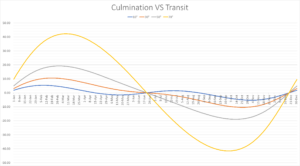
The cause of the time difference between the two “flavors” of astronomical midday is due to the sun’s increasing declination that causes the sun’s altitude to increase faster than its movement along the day arc moves it down. The farther north you go, the flatter the day arc appears, meaning that it travels much farther horizontally for a small change in altitude. Around midday when the arc is flattest, the change in declination is increasing the altitude immediately after the meridian transit more than the drop caused by the day arc.
At this point you may wonder why chatzos is called chatzos if we define it as one of the astronomical midday definitions that is not exactly half of the day (a case can be made that neither is “half of the day” chatzos, since at the point of splitting it, you have not reached the lengthening full day…). The Radak’s definition of chatzos / chatzi quoted above concludes with:
… כלם ענין חלוקה, בין שיהיו החלקים בשוה או בלא שוה.
… they are all under the category of splitting, whether they are of equal parts or not.
The Radak on Shmuel II, 19:41 restates that chatzi is not always half as is clear from the “half” that is referred to there:
… ולשון חצי ומחצה ומחצית אינו אלא חלוק החלק מהכלל פעמים הוא חלק כחלק בשוה וזהו ברוב ופעמים אינו בשוה.
… the language of half (in its various forms) are only splits of the whole, sometimes it is an equal division, and that is the case most of the time, but sometimes it is not equal.
Note that this concept of chatzi not being half of the day would also seem to counter objections that some have about calculating chatzos from alos to tzais Geonim as an uneven split (regardless, it is very hard to fit such an uneven chatzos into any of the rishonim or achronim we mentioned earlier), though Rabbi Mordechai Kuber pointed out that it is half of the halachic day timewise, so it still fits the definition of chatzos.
Halachic Definition of Chatzos
Rashi in פסחים נח. ד״ה בין הערבים defines the afternoon (starting immediately after the 6th hour or chatzos) as:
משש שעות ולמעלה שהצל נוטה קרינן בין הערבים
From six hours and on, when the shadow leans [to the east], it is called the afternoon.
Rashi has the same definition in Brachos ט. ד״ה שם תזבח את הפסח and כו: ד״ה מנחה גדולה and Shabbos ט: ד״ה מנחה גדולה. Since Rashi defines after chatzos as when the shadows begin leaning, it would indicate that at chatzos shadows do not lean east or west, but point directly north. This seems to be a clear indication that chatzos is defined as when the sun is transiting its local meridian and is directly south at an azimuth of 180° (or directly north or an azimuth of 0° for locations south of the sun, or directly overhead on certain days for locations between the Tropic of Cancer and the Tropic of Capricorn), when there are no east or west shadows. The Tosafos Yom Tov in פסחים פ״ה מ״א expands and clarifies this:
כתב הר״ב דזמן שחיטת תמיד מכי ינטו צללי ערב וכו׳ ואין צל נוטה אלא צל כל אדם תחתיו. רוצה לומר ואין לו נטייה לא למזרח ולא למערב אבל שיהיה תחתיו ממש זהו דבר שהחוש מכחישו בכל אלו הארצות ואף בארץ ישראל. לפי שאין צל כל אדם תחתיו אף באמצע היום. אלא להשוכנים בין עגול סרטן לעגול גדי. ואחת בשנה *) תבא השמש נוכח הראש לקצתם קצתם איש איש ביומו לפי מספר עגולי השמש שתעשה מראשית השנה עד אחרית השנה אבל לשוכנים חוצה לעגולים האמורים לעולם השמש דרומית או צפונית להם ועושה צל בהכרח הנוטה לצפון או לדרום אפי׳ בצהרים והנה ארץ ישראל ידענו כי היא כמו שמנה מעלות לצפון עגול סרטן:
כתב המגיה *) הלשון אחת בשנה אינה מדויקת, כי רק לאלה השוכנים במקום קצות עגולי ההפך סרטן וגדי הרחוקות כל אחת מן קו המשוה כ״ג מעלות וחצי אם לצפון או לדרום רק לאלה תבא השמש נוכח הראש אחת בשנה; לשכנים בקצה גבול עגול ההפך סרטן יהיה זה ביום תקופת תמוז ולשוכנים בקצה גבול עגול ההפך גדי, ביום תקופת טבת. אך לאלה השוכנים בין שתי קצות העגולים האלה תבא השמש נכחם שתים בשנה:
The Raav wrote “The time of the Korban Tamid is from when the afternoon shadows lean etc. and there is no shadow, rather everyone’s shadow is directly underneath him.” Meaning, that the shadow does not project to the east or west, rather that it is directly under him. However, this is something that is not the case in any of our lands, including Eretz Yisrael. This is because a person’s shadow is not under him even in the middle of the day besides for those residing between the Tropic of Cancer and the Tropic of Capricorn … for those residing outside of the Tropics, the sun is always north or south of them [at solar noon] and casts a shadow to the north or south even in the afternoon. We know that Eretz Yisrael is about 8° north of the Tropic of Cancer.
Unlike the Tosafos Yom Tov, Rabbi Avraham Bar Chiyya Hanasi רבי אברהם בר חייא הנשיא in the Sefer Ha’ibur ספר העבור, מאמר אּ׳ שער ט׳ defines chatzos as:
והרגע השני הוא עת היות בחצי השמים מפני שהיא מגעת במקום ההוא אל סוף גבהה ועליותה על המקום אשר זרחה עליו, ומכאן ואילך היא נוטה לערוב
The second moment is the time that the sun is in the center of the sky since at that point it reaches its highest point and its climb from its rising point, and from here forward it begins to dip to the evening.
This definition refers to the sun’s highest point / culmination. Though it does mention the “center of the sky” which can be understood to mean meridian transit, from the ראב״ח‘s general context it appears clear that he is referring to the culmination.
I would like to express my thanks to my son Shai for his insights, ideas and calculations, Pinny Markowitz for his debugging work in contrasting the old NOAA implementation of solar noon calculations versus the new implementation, and to members of the Frum software developers #zmanim Slack channel for reviewing and making suggestions that improved this article.
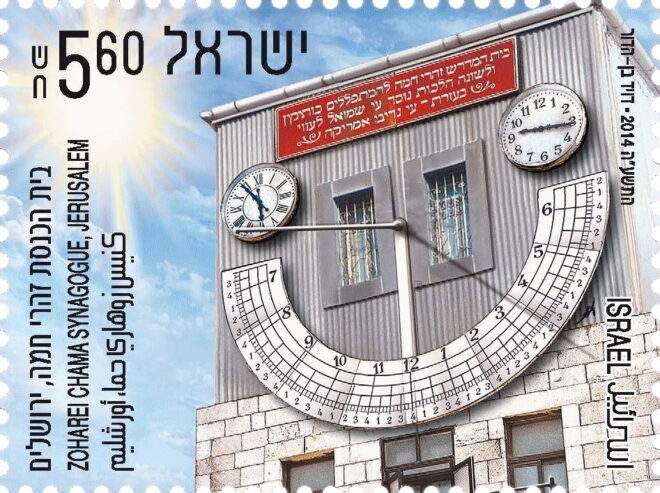
 The time of year that the zman of chatzos has the greatest impact is during the
The time of year that the zman of chatzos has the greatest impact is during the 